Vitor Valley – Day Trip from Arequipa
When Malka mentioned that she had seen photos of numerous old clay amphorae in Vitor and suggested that we visit the area to investigate, I remember thinking “how good can it be?” as we had never even heard of the area before. The answer is very good indeed.
Note: We took so many photos of old amphorae that they are better viewed here in a Facebook album.
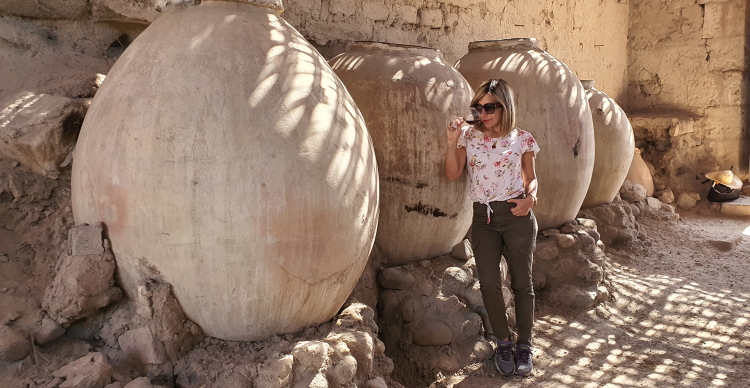
After spending a couple of days looking around and enjoying time with winery owners and winemakers we realized that this area is an absolute gem, loaded with winemaking history and so close to the city of Arequipa in Peru that it is logistically easy to visit. This valley was one of the first places the Conquistadors planted with vines and from here it supplied the empire as far away as Lima and Potosi in Bolivia.
We are adding this video as it was recently made on another trip to Vitor, fantastic work by Robert Els Photography in Arequipa.
Despite starting wine production in the 16th century, today the area specializes in Pisco production plus the traditional semi-sweet wines. Dry wine is a low priority, and inconsistent in quality, but over the last few years, quality has improved and dry table wine is becoming more popular as Peruvians discover foreign wines and palates change.
Most importantly, and I cannot stress this enough, is that we always place interesting and enriching experiences ahead of wine quality. It might be that the wine is not great sometimes, but the people we meet and places make it is well worth a visit. Vitor delivers in spades!
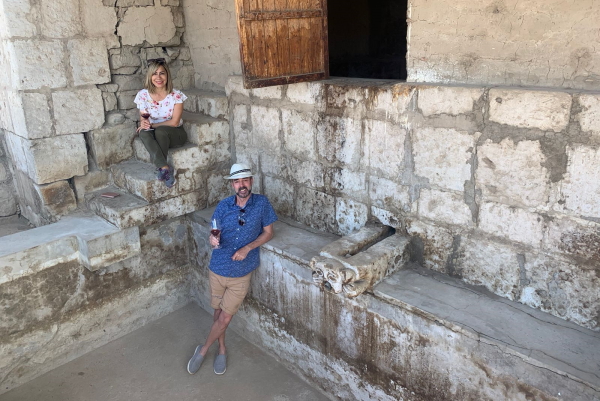
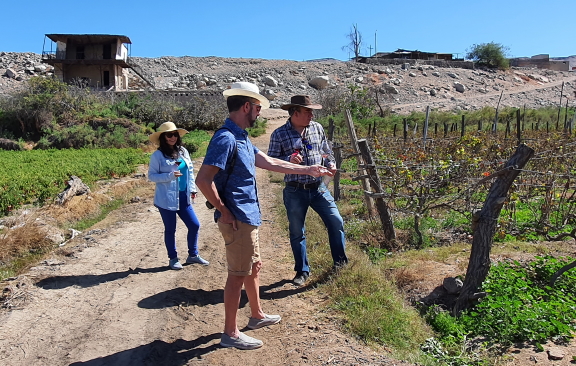
Thankfully weeks and weeks of Llama trains are no longer required to traverse the desert today, so in a mere 75 minutes of driving, the road descends into the Vitor Valley where a swathe of green vegetation awaits. On a day trip, our clients will have time to enjoy two of the three wineries on offer, depending on the best combination for that day. Each of the three places we visit is very old, dating back to at least the 17th century, and they are blessed with an impressive array of old clay amphorae which have been reclaimed, after being completely discarded in many cases.
El Socabon was first mentioned as a wine producer in 1575 but probably predates that. It has passed through many hands during the turbulent centuries and today Angela and Denis are the most recent generation to manage the winery. They are very hands-on, handling the tours, tastings and lunch in a place that literally exudes history. You can see in the photos how the winery has been restored and the tasting room is a real treat to experience. You will really enjoy your meal within these ancient walls, sipping and learning more about Peruvian Pisco and wine.
The Hacienda del Abuelo winery is a well-known name in the region of Arequipa, but mostly for producing Pisco. Jose Zegarra, the latest generation of owners, was very happy to show us around his vineyards and we enjoyed a tasting of their wines and Piscos. He explains that they are determined to improve the visitor experience with an upgraded tasting area, terrace and bathrooms. In our opinion, which we expressed to Jose, it is important that they don’t try to “upgrade” too much and lose the character of this old winery. Vitor is not Bordeaux or Rioja, and shouldn’t try to be. In most cases, high levels of investment are not even possible in these traditional family-run businesses where owners are unwilling to enlist partners, investors or bank loans.
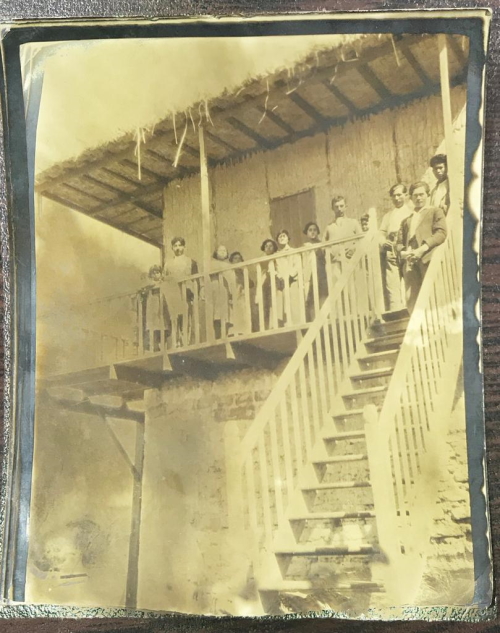
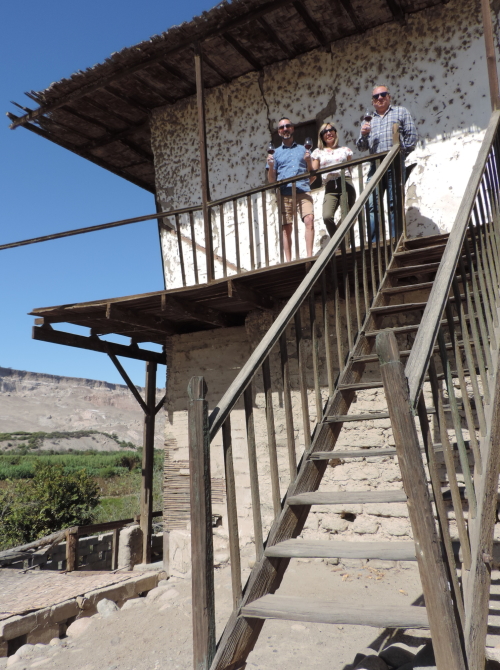
One of the charms of the vineyards of Vitor is that wineries retain so much of their original character. It may be that some cosmetic work needs to be done, Hacienda del Abuelo and Paz-Soldan are examples of this, but high-investment constructions and fancy, plush tasting rooms are certainly not required. Contact with the passion of owners, agronomists and winemakers is far more important we feel.
Paz-Soldan is our third winery in Vitor. We spent the day with Luis Fernando, again the latest member of the generations of owners. He is brimming with pride in what he produces but knows that the vineyards and old winery building in Vitor need some work to make them serviceable for regular visitors. In common with Hacienda del Abuelo, we don’t think a big spend is required, mainly some visual improvements and basic facilities upgrades. We had fun recreating an old photo which you can see above, and from the other photos in our album you can see the old winery infrastructure, it just needs a facelift.
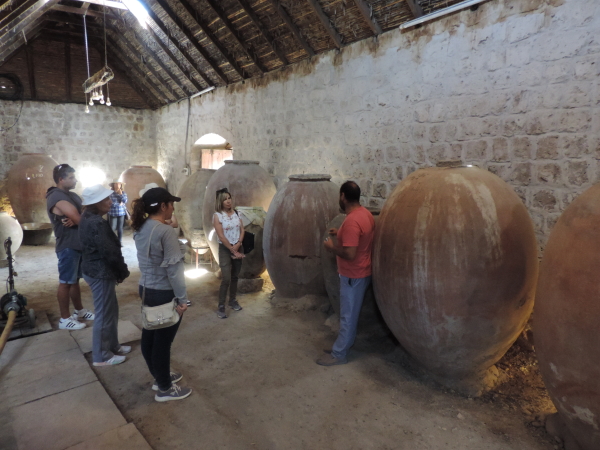
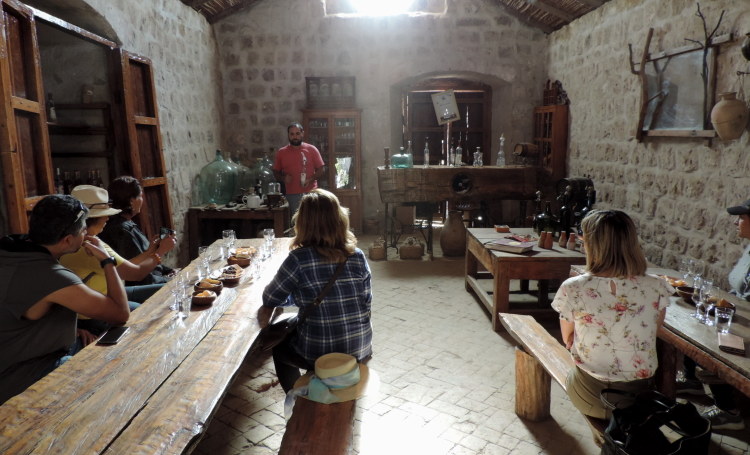
These Vitor wineries are all blessed with dozens of centuries-old amphorae, an unusual sight in today’s high-tech winemaking world. We had seen many more of these vessels on our trips to Georgia and Armenia, but they still have the craftsmen to make new ones in those countries. Peru doesn’t!
Winery owners like Luis Fernando are always on the lookout for these national treasures before abandoned wineries or family small holdings just let them go to rack and ruin. The work these winemakers and owners are doing in rescuing these “tinajas” as they are called here, is invaluable and whether they are driven by future profits, marketing advantage or civic duty we don’t care, it’s just a good job someone is doing it.
We are off to the Corire valley next where there are even more of these clay beauties, so make sure you visit our blog again.


